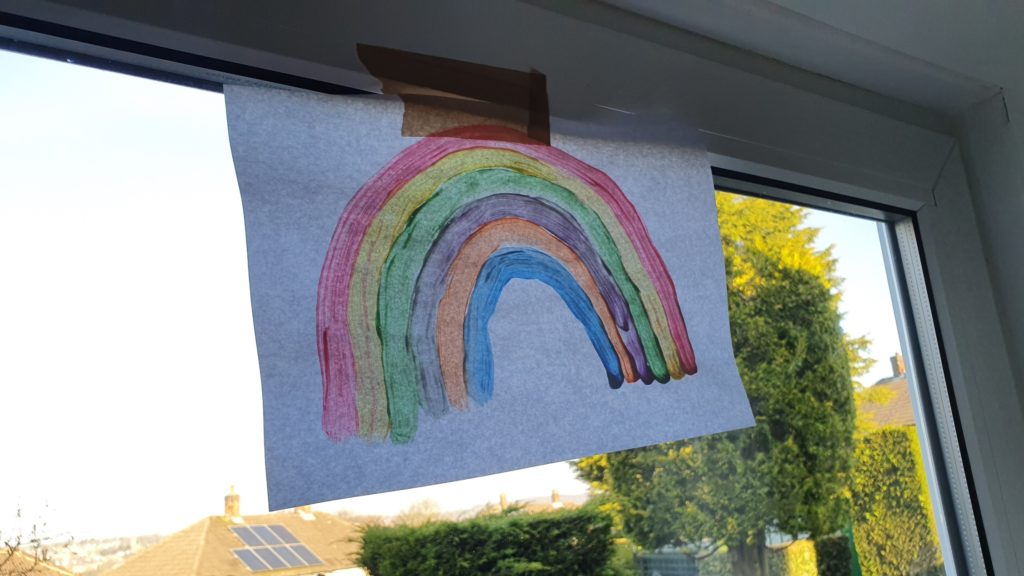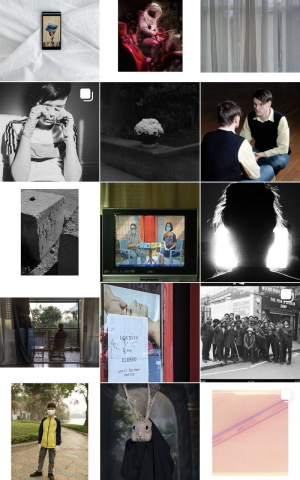
When Digital Participation Becomes a Necessity: Online in an Out-of-Line World
We are currently living in an unimaginable time in our human history. Viruses have come and gone before, but never have we had such an ability to stay connected and access news, activities, education, entertainment and creative opportunities without leaving our homes.
We are now participating in activities with more people worldwide than we ever have before. In the past week, Body Coach Joe Wicks has engaged 800,000+ participants in live stream mass exercise from all over the world every day. How many of us realise that we are participating in exercise with nearly a million people all at the same time? The applause for NHS and healthcare staff was a demonstration of a mass participation soundscape, uplifting those taking part and those it was for. How many rainbows are now in our windows to show solidarity from one child to another? We are not only participant in activities together at the same time, but are also using creativity and culture to provide positivity to others, all promoted and shared online.
I have never been a huge fan of digital participation being seen as an online activity. Digital Participation is so much broader and is more aligned with participation and community arts then it is with digital. However, I am not surprised by how online technologies have been adopted so quickly by arts and culture organisations as a means to engage audiences and to remind our communities that we are still here for you.
With so many children and young people now at home, parents and carers are finding the internet a key tool to educate and inspire, and arts organisations have rose to the challenge to be there as they always have. Online exhibitions and gallery archives, like V21 Artspace and others, have seen visitor traffic like never before. It was as if audiences instantly missed something they may not have though about venturing out to see before being told we had to stay at home. Online resources like video tour guides, pdf learning guides, live steam group activities and more are key to giving audiences deeper experiences, and maybe boost interest in arts and culture when this is all over.
We are currently seeing new methods of doing the same thing. Engaging our communities through a screen, rather than in person. We are seeing more freedom to share knowledge. Things that would normally be reserved for bringing audiences to venues and projects are now being widely shared. We are now living in a more open world of arts and culture and it took a virus to show us what we already know, sharing creative and culture is more than just footfall and visitor numbers, it is essential to our audiences and a contributor to wellbeing and social cohesion.

Somethings have not changed. This new uptake of digital engagement doesn’t take away from the fact that arts and culture has worked in this way for a number of years now. It just means that certain aspects of working have increased and in some ways become more relevant to the current situation. For example, the current #massisolation: Experiences of COVID-19 mass participation project with FORMAT International Photography Festival uses Instagram to collate photographs, videos, drawings, memes, survival tips and more from participants all over the world to document lives in our societies. FORMAT has been engaging participants in similar ways since it began in 2004 and in 2015 3000+ participants contributed to an online and offline exhibition of photography around the subject of ‘evidence’. What we’re seeing now is a wider uptake of these methods of engaging and encouraging participation on mass, from our homes.
One thing that is becoming clear is that audiences are now more exposed to these methods of participation, increasing their need moving forward. Will we see a rise in visitor numbers to arts and culture organisations, now that audiences have, through their computer screens, had a glimpse of what’s out there in real spaces? Will more people participate in mass experience projects instead of seeing their devices as a tool for entertainment over creativity? Or will audiences get used to online interaction, meaning that arts and culture organisations need to re-think how they engage with their audiences more than they thought they ever would?
What is important to remember, in our current situation of uncertainty, is that while things are more upside-down than ever, we have the time, capacity and inspiration to be more creative than we ever thought we were able to in our ‘normal’ lives and I urge everyone to do something that they may have not given themselves time for before, digital or otherwise.
Take care everyone!